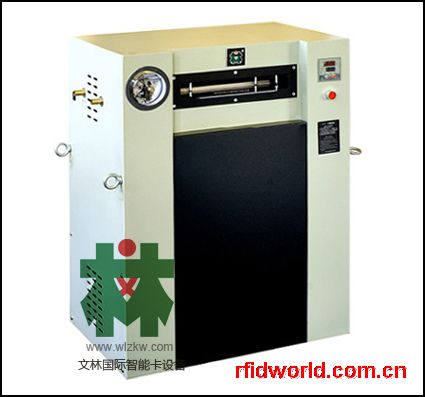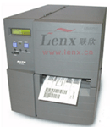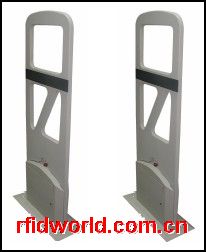美国科罗拉多州测试有源标签100%追踪州内驯鹿
美国科罗拉多州测试过的无源RFID系统包括低频段的和超高频UHF的,但是都无法达到100%的识读率,最终政府农业部门决定使用有源的RFID标签进行测试。该州使用RFID来追踪麋鹿和鹿科,对精确度要求是极其严格的。因为鹿科动物群内有一种CWD的慢性疾病,该病与疯牛病同属于传染性海绵状脑病 (Transmissible Spongiform Encephalopathies,TSE)的一种。一旦死的动物没有被发现,对该州的农业经济将造成重大的损失!
该州进行过的第一次测试是在2004底, 使用的是由Digital Angel, Allflex, Y-tex and Avid Identification Systems. 提供的低频134.2 kHz标签和读写器。第二次为期9个月(2005.3-2005.12)的测试是Advanced ID公司提供的UHF (915 MHz) 标签与识读器。
将要进行的有源标签系统测试,使用的可能是 Cattle Traq 和 Smart Ag Tag 设备。
By RFIDJournal Claire Swedberg
Jan. 6, 2006—After completing a trial of passive low-frequency and UHF RFID tags for cervid tracking, the Colorado Department of Agriculture has determined that active RFID tags may be the only way to gain the 100 percent read rate it seeks for cervid herds in the state. Cervid tracking is more rigorous in Colorado than in some other states because of a state mandate requiring ranchers to test dead elk and fallow deer for CWD, or chronic wasting disease. CWD is part of a group of ailments known as transmissible spongiform encephalopathies, which includes mad cow disease. If an animal decomposes before being tested, neither ranchers nor the state can determine if it died of the lethal and contagious disease.
In the most recent of two Colorado cervid pilots—using passive UHF RFID tags and interrogators (readers) made by Advanced ID Corp.—the state’s agriculture department was able to read 100 percent of the tags on one of the three herds tested, but considerably less on the other two, says Scott Leach, the department’s CWD field investigator. The first pilot, which took place in late 2004 and early 2005, involved low-frequency tags (134.2 kHz) and readers, with hardware supplied by Digital Angel, Allflex, Y-tex and Avid Identification Systems. The second, a nine-month trial held from March to December 2005, used Advanced ID’s UHF (915 MHz) tags and interrogators.
| Scott Leach, Colorado Dept. of Agriculture |
Leach says he has not yet tried to use a passive RFID system to track an animal, live or dead. He adds, however, that active RFID equipment manufacturers have indicated tracking of animals may be possible. In the meantime, passive RFID systems allow the ranchers to recognize the loss of an animal and search for it.
Reading tags on elk is uniquely challenging because the animals resist being run through chutes, where they could pass an RFID reader at close range. Elk are often skittish around humans, even ranchers with whom they are familiar. Places in Colorado where captive cervids live include 1,000- to 2,000-acre fenced-in hunting ranches, Leach says, where it is very difficult to get within read range of the handheld UHF interrogators used in the trial. Such readers have a range of about 3 meters, or slightly less than 10 feet. “When you have large bulls with full antler racks in rutting season, you don’t want to be too near [them],” Leach says.
Advanced ID stationary readers are being piloted to track cervids in New York State, installed near food troughs, water and salt licks (see N.Y. Tests RFID on Domestic Deer). Leach says he may consider stationary readers as a solution in Colorado as well, but also intends to test an active RFID tag system in the coming months to see if the increased read range would improve results. The biggest issue in that case, according to Finch, is the price, which is likely to be considerably higher for active tags. Advanced ID does not currently provide active tag systems, but might do so if it sees significant commercial interest, Finch says.
| Advanced ID’s president and CEO, Dan Finch |
Leach says that during a one-day inventory (part of the passive UHF RFID trial), he was able to read 100 percent of the cervids’ tags at one small ranch, 24 percent at a second and 50 percent at a third. The animals were particularly skittish around those taking the inventory at the second ranch. The initial goal was to test whether UHF tags and readers would have a longer read range than the previously piloted low-frequency system. “They did,” Leach says. “It was a matter of feet, rather than inches.”
Colorado has about 100 cervid ranches, with a total of 6,000 or so captive elk and deer. Animals on small ranches can probably be inventoried by hand, Leach says, but when that is not possible, “electronic tracking is the way to go.” Thus far, he says, he hasn’t found anything better than RFID—though he has considered bar-coded animal tags (which require a clear line of sight between the bar code and the scanner), GPS (which is expensive) and retinal scans (which fail after the animal dies).

 登录
登录
 注册
注册

















